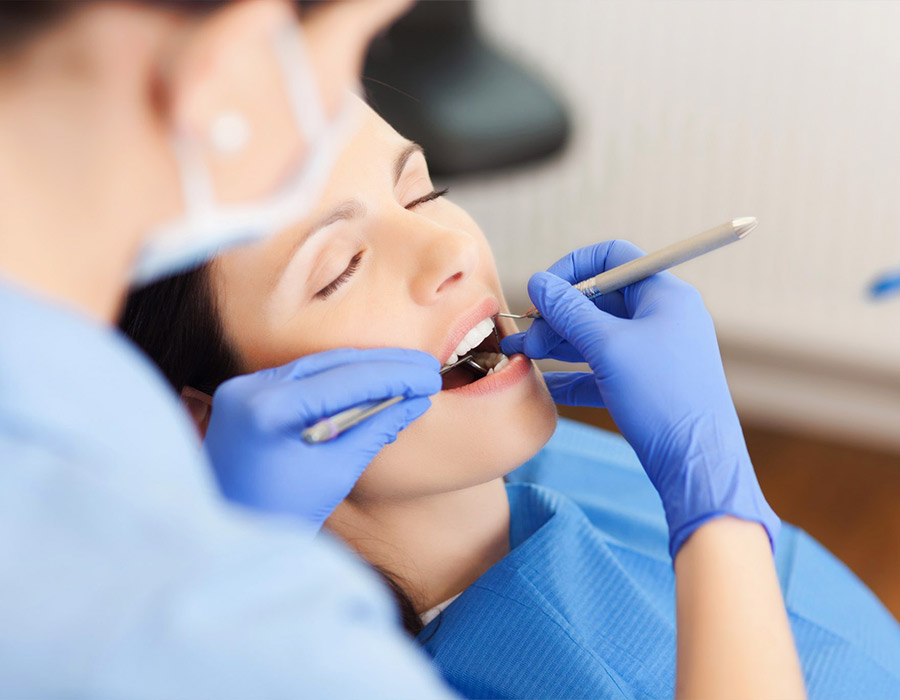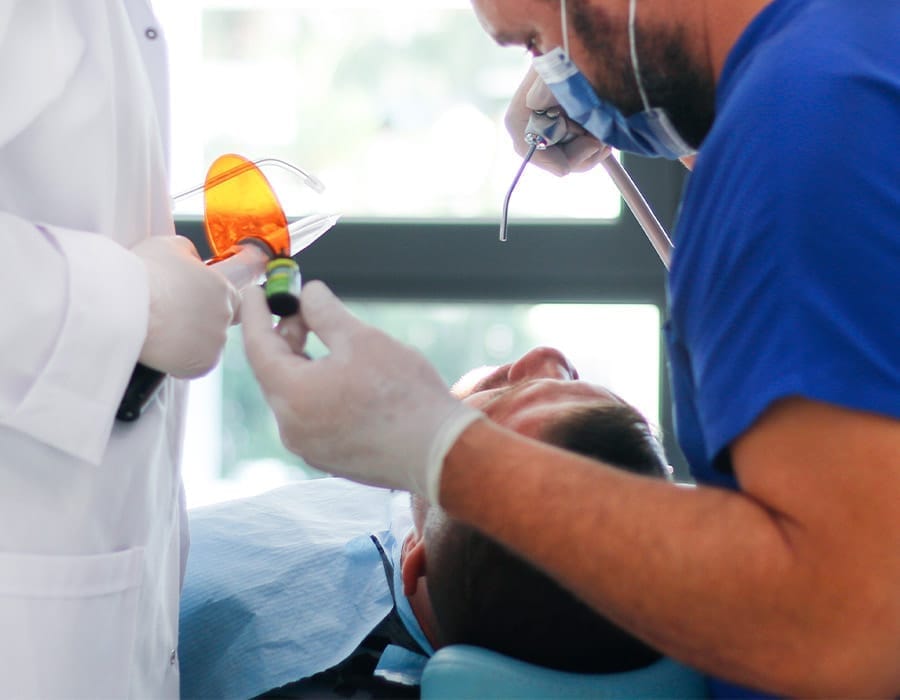Sedation
The patient’s consciousness is open but he is in a mild sleep state. The patient follows the commands. It is made by applying small doses from the vein pathway opened from the cord. This method is generally preferred in patients with dental fear in adult patients, in patients with excessive nausea-ting reflex, and in patients with general anesthesia at risk. It is also used in children for short transactions. Recovery is rapid after administration of the medication. The patient does not remember anything after the procedure.
Advantages of Sedation
- It creates a comfortable and safe environment for the patient and helps to relieve fear and anxiety.
- Patients do not remember the contents of the procedure performed, the pain, the voices that they do not like, the effects of sedative drugs. This also makes it easier for the patient to develop dental treatment in later sessions.
- Increase pain threshold, reduce pain perception.
- Since the patient’s stress is completely removed during treatment and unwanted reflexes are prevented, a comfortable working environment is provided for the physician.
Healthy teeth, smiling faces…

Sleep Dentistry or Sedation Dentistry?
Sedation dentistry has occasionally been dubbed sleep dentistry, but this term is misleading. In actual fact, you do not sleep during the procedure, but because of the effects produced by the sedative, you may feel sleepy. Sedation dentistry enables you to be kept awake throughout the entire procedure, but you will feel relaxed and likely won’t remember much about your treatment. The use of general anesthesia is not considered sedation dentistry.
Types of Sedation Dentistry
Minimal sedation
Nitrous oxide, more commonly known as laughing gas, is used to relax patients during dental procedures. When you receive laughing gas, the dentist gives you a nose apparatus through which you breathe the gas. The effects are very mild, and you’ll start to feel the gas very quickly, sometimes as soon as 30 seconds after you start breathing it in.
Some patients relax enough with nitrous oxide and do not require another form of sedation. Other patients need laughing gas on top of oral sedation.
Patients who only receive laughing gas as a sedative are often allowed to drive themselves home after a procedure.
Oral Sedation
Oral sedation, also called “conscious sedation,” involves you taking a prescribed dose of sedative before your procedure. Depending on your case, you may take one pill the night before, and one pill an hour before you have the procedure, or otherwise as directed by your dentist or doctor. Though you’re awake during your procedure, most patients remember either very little or nothing at all of the appointment after it’s happened.
This type of sedation leaves you awake for the procedure, but significantly relaxes you. Patients who have higher levels of anxiety often benefit from this type of dentistry.
IV Sedation
You receive the sedative drug through a vein, so it goes to work more quickly. This method allows the dentist to continually adjust the level of sedation.
Deep Sedation & General anesthesia
Only patients who need significant oral surgery, or who are resistant to other types of sedation, will need general anesthesia. With general anesthesia, you’re totally unconscious. This kind of sedation needs to happen in a hospital or a specialized clinic with either a nurse anesthetist or an anesthesiologist administering the sedative and monitoring your vital signs.

Who Needs Sedation Dentistry?
Sedation is usually recommended for patients who may have issues or problems with getting dental work done.
- Have a fear or anxiety of being at the dentist
- Have a hard time sitting still for long periods of time
- An overly sensitive gag reflex
- General anxiety about extensive dental procedures
- A low pain threshold or sensitive teeth and gums
- A phobia of dentists and dental work
- Special needs, such as behavioral, physical, or cognitive impairments that prevent them from completing dental work
What level of sedation you need?
The level of sedation that a patient needs is based on their level of anxiety, their medical history, their response to a particular level of sedation, and finally on the characteristics of the procedure to be performed (duration, invasiveness).
Some will respond fine to a minimal level of sedation, whereas others may require a deeper level of sedation to achieve the same degree of relaxation. A specific patient may also require different level of sedation for different procedures; minimal sedation may be enough for a routine dental cleaning, but moderate or deep sedation may be preferred for an oral surgery procedure.
It’s a general rule that the deeper the sedation level, the higher the risk, as breathing and cardiac function may be affected. With moderate sedation, risk is generally much lower, and dentists may prefer this level of sedation due to its decreased risk to patient health.

